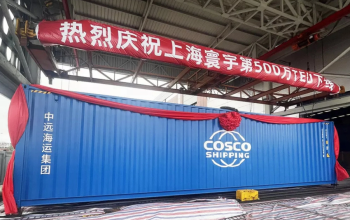New life for materials: clever reuse from clearance
Rapidly changing technologies and growing global population have led to an increase in waste production. As a result, construction and demolition waste represents a significant portion of this waste, with billions of tons generated each year. However, a glimmer of hope is emerging in the field of construction waste management: the clever reuse of materials from clearance.
The construction and demolition waste challenge in Boston
Construction and demolition waste (CDW) consists of materials, such as concrete, brick, wood, metal, plastic and plaster. This waste is sent to landfills or incinerated, leading to a loss of valuable resources and significant environmental impacts.
The construction sector in Massachusetts is a large consumer of natural resources, and inadequate management of construction waste contributes significantly to greenhouse gas emissions and pollution. In addition, the extraction of new raw materials to meet the growing demand for earthmoving and construction materials puts enormous pressure on our environment.
Clever reuse of materials
Material reuse involves recovering, sorting, and reusing materials from end-of-life buildings or demolition projects. This approach helps reduce the amount of waste sent to landfill, conserves valuable resources and reduces the carbon footprint associated with the production of new building materials.
There are different ways to reuse materials:
The first step consists of sorting the materials from the clearance to separate the reusable elements from those which are not. This operation can be carried out on the demolition site or in specialized sorting centers. Many reclaimed materials, such as bricks, wood, doors, windows and appliances, can be repaired and refinished for future use. This extends their lifespan and reduces the demand for new materials.
Recovered materials can be reintegrated into new construction or renovation projects instead of ending up in a dumpster rental. For example, reclaimed bricks and wooden beams can be used in new construction. Materials that cannot be reused as is can be recycled to produce new raw materials. For example, concrete can be crushed to create construction gravel.
The benefits of reusing materials
Reusing materials from clearance has numerous advantages, both economically and environmentally:
Recovering and reusing materials helps reduce costs associated with purchasing new materials. This can make construction projects more economical.
Reusing materials helps conserve the planet’s limited natural resources, such as wood, metal and minerals instead of renting a dumpster to discard junk. Fewer materials are sent to landfill, reducing the amount of construction and demolition waste. The manufacture of new construction materials requires energy and generates greenhouse gas emissions. By reusing existing materials, we reduce these emissions.
Clever reuse of materials allows historic architectural elements to be preserved, thereby contributing to the preservation of cultural heritage.
Some examples of material reuse
Several initiatives around the world show the effectiveness of the clever reuse of materials in the management of construction and demolition waste.
Some regeneration projects saw the reuse of materials from end-of-life industrial buildings to build new housing, while preserving the historic character of the Boston area The city of Boston encourages the reuse of end-of-life wooden buildings, thereby promoting forest conservation and waste reduction.
The state of Massachusetts has set up reuse centers where individuals and businesses can buy second-hand building materials at favorable prices, helping to reduce waste. Through improved awareness, efficient logistics and economic incentives, clever reuse of materials can become a norm in the construction industry. This approach can contribute to the preservation of our planet.










